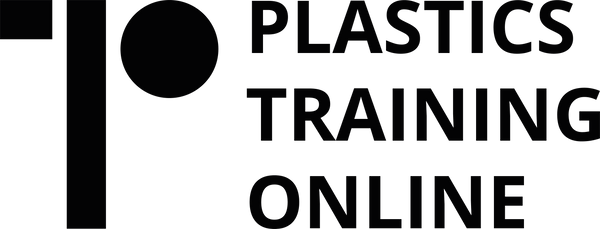Hand Tools
Hand Tools
The "Hand Tools" course covers the most important hand tools used on the job. The online course begins with measuring tools, including a discussion of units of measurement. Examines the various kinds of wrenches and screwdrivers, their uses, maintenance, and handling techniques. Explains other hand tools by specialty: pipefitting tools, plumbing tools, electrician's tools, sheet metalworking tools, machinists' metal-working tools. Ends with hoisting and pulling tools. This course has no prerequisites. Hand Tools is available in online technical training and course manual formats.
Subscribe & Unlock Full Access
Gain immediate access to our library of expert-led training courses, labs, and support.
-
Description:
The "Hand Tools" course covers the most important hand tools used on the job. The online course begins with measuring tools, including a discussion of units of measurement. Examines the various kinds of wrenches and screwdrivers, their uses, maintenance, and handling techniques. Explains other hand tools by specialty: pipefitting tools, plumbing tools, electrician's tools, sheet metalworking tools, machinists' metal-working tools. Ends with hoisting and pulling tools. This course has no prerequisites. Hand Tools is available in online technical training and course manual formats.
-
Included Courses:
Lesson 1 - Measuring Tools
Topics:
Linear and angular measurement; Rules and measuring tapes; Slide, vernier, and micrometer caliper; Squares
Learning Objectives:
– Explain how to hold a rigid rule correctly when measuring an object and show from which point the measurement begins.
– Describe how to set lock joint transfer-type calipers.
– Identify vernier calipers.
– Explain how to take a measurement with a micrometer caliper.
– Name the parts of a combination square.Lesson 2 - Wrenches and Screwdrivers
Topics:
Wrenches-open-end, box-end, combination, socket, adjustable, torque; Screwdrivers-standard, cross-slot, spiral, ratchet, offset; Driving and removing screws; Restoring a blade
Learning Objectives:
– Identify types of materials used for making wrenches.
– Identify open-end, box-end, socket, socket-head, adjustable, torque, and striking-face wrenches.
– Describe two sizes that are important in identifying a socket wrench.
– Identify standard, Phillips, offset, and spiral-ratchet screwdrivers.
– List the steps to follow when driving a screw.Lesson 3 - Pipefitting Tools
Topics:
Pipe wrenches; Vises; Cutting, reaming, threading, and tapping pipe; Cutting tubing and plastic pipe; Flaring tubing; Tool care
Learning Objectives:
– Identify a straight pipe wrench, a Stillson wrench, a chain pipe wrench, a strap wrench, and a compound-leverage wrench.
– Explain how to use a pipe wrench.
– Explain why a machinists' vise should not be used for holding pipe.
– Explain how to thread pipe.
– Explain how to clean a pipe tool.
– Explain how to cut and flare tubing.Lesson 4 - Plumbing Tools
Topics:
Plumbing systems and codes; Joining pipe; Tube bending; Cutting and assembling pipe; Plungers; Augers; Sewer tapes; Special wrenches
Learning Objectives:
– Explain how to use a mechanical tube bender.
– List the steps in joining hubless pipe.
– Explain why the drain pipe should be completely covered by the force cup.
– Name the criteria used in selecting line clearing tools.
– List the steps in measuring pipe when using the center-to-center measuring systems.Lesson 5 - Electrician's Tools
Topics:
EMT bender; Bending and assembling conduit; Knockout punches; Fish tapes; Pliers; Wire and cable strippers; Test and safety equipment
Learning Objectives:
– Explain how to use an EMT bender and a neon circuit tester.
– List the parts of a knockout punch.
– Name the uses of the all-purpose tool.Lesson 6 - Woodworking Tools
Topics:
Planes; Scrapers; Drills and bits; Chisels; Levels; Plumb bobs; Hammers and nail sets
Learning Objectives:
– Describe the difference between a ripsaw and a crosscut saw.
– Explain the difference between a compass saw and a keyhole saw.
– Describe the different types of planes.
– Identify a Forstner bit.
– Explain the working of a plumb line.Lesson 7 - Masonry, Plastering, and Glazing Tools
Topics:
Working with bricks, mortar, concrete; Tuckpointing; Edging and finishing; Repairing plaster and wallboard; Cutting and installing glass
Learning Objectives:
– Explain how to mix a small batch of mortar.
– List the uses of a trowel.
– Define tuckpointing.
– Explain why flat concrete surfaces must be screeded.
– Explain how to repair one of the following problems: (a) small plaster cracks, (b) shrinkage cracks, or (c) loose or bulging plaster.
– Explain how to replace a broken pane of glass in a window.Lesson 8 - Sheet Metalworking Tools
Topics:
Gauges; Layout tools; Dividers; Punches; Nibblers; Riveting tools; Metal-cutting chisels; Hammers; Snips; Dressing tools; Bench stakes
Learning Objectives:
– Identify different types of snips and punches.
– Identify the bench stakes discussed in this Lesson.
– List six safety practices to follow when working with sheet metal.
– Describe different types of sheet metal.Lesson 9 - Metalworking Tools
Topics:
Vises; Hacksaws; Files; Taps; Dies; Thread classes; Reamers
Learning Objectives:
– Select the proper hacksaw blades for cutting various materials.
– Explain the difference between single-cut and double-cut files.
– List the types of taps usually found in a tap set.
– Explain how to cut an external thread on a bolt, screw, or stud.
– Explain how to remove a reamer from a hole.Lesson 10 - Hoisting and Pulling Tools
Topics:
Knots; Wire rope; Slings, sling angles, hitches; Sling spreader beams; Block and tackle; Chain fall; Pullers
Learning Objectives:
– Explain how to prevent synthetic and fiber rope from unraveling.
– Explain how individual wires and strands of wire are formed into wire rope.
– Identify the most appropriate sling for use near corrosive chemicals.
– Identify a slide-hammer puller.
– Describe different kinds of slings and loads
